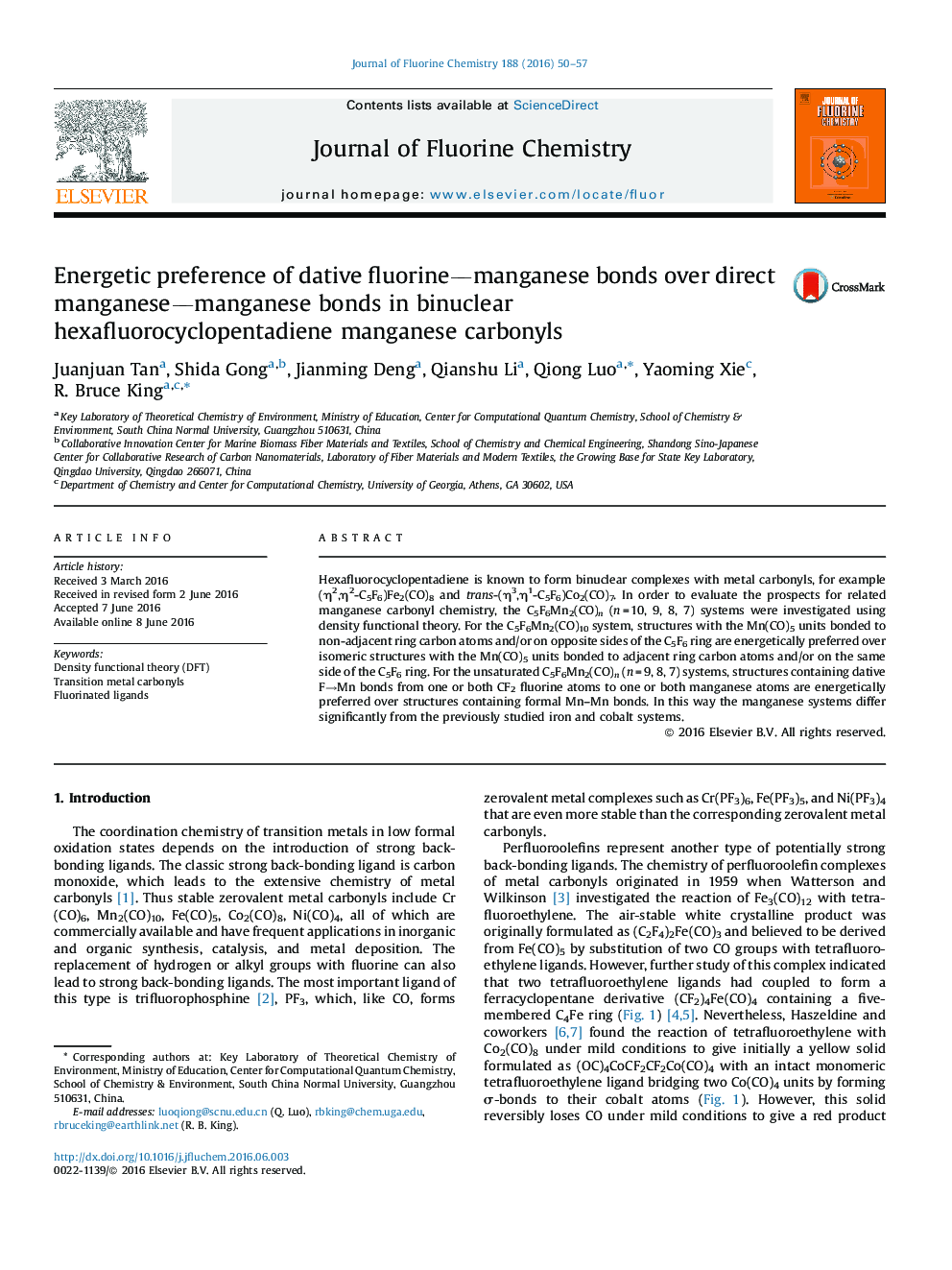| Article ID | Journal | Published Year | Pages | File Type |
|---|---|---|---|---|
| 1313522 | Journal of Fluorine Chemistry | 2016 | 8 Pages |
•The C5F6Mn2(CO)n (n = 10, 9, 8, 7) systems have been investigated by density functional theory.•C5F6Mn2(CO)10 structures are preferred with Mn(CO)5 groups bonded to non-adjacent carbons and on opposite sides of the ring.•For C5F6Mn2(CO)n (n = 9, 8, 7) structures with dative F→Mn bonds are preferred over structures with Mn–Mn bonds.
Hexafluorocyclopentadiene is known to form binuclear complexes with metal carbonyls, for example (η2,η2-C5F6)Fe2(CO)8 and trans‐(η3,η1-C5F6)Co2(CO)7. In order to evaluate the prospects for related manganese carbonyl chemistry, the C5F6Mn2(CO)n (n = 10, 9, 8, 7) systems were investigated using density functional theory. For the C5F6Mn2(CO)10 system, structures with the Mn(CO)5 units bonded to non-adjacent ring carbon atoms and/or on opposite sides of the C5F6 ring are energetically preferred over isomeric structures with the Mn(CO)5 units bonded to adjacent ring carbon atoms and/or on the same side of the C5F6 ring. For the unsaturated C5F6Mn2(CO)n (n = 9, 8, 7) systems, structures containing dative F→Mn bonds from one or both CF2 fluorine atoms to one or both manganese atoms are energetically preferred over structures containing formal Mn–Mn bonds. In this way the manganese systems differ significantly from the previously studied iron and cobalt systems.
Graphical abstractFigure optionsDownload full-size imageDownload as PowerPoint slideThe C5F6Mn2(CO)n (n = 10, 9, 8, 7) systems were investigated using density functional theory. Structures containing dative F®Mn bonds from one or both CF2 fluorine atoms to one or both manganese atoms are energetically preferred over structures containing formal Mn–Mn bonds for C5F6Mn2(CO)n (n = 9, 8, 7).
